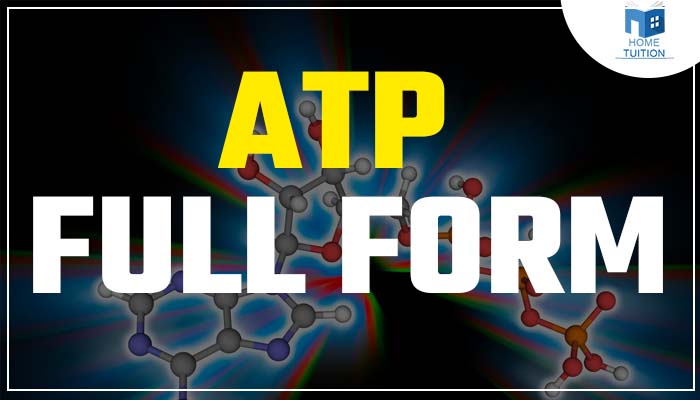Full form of ATP
Adenosine Triphosphate is the full form of ATP, an organic molecule responsible for controlling almost all cellular mechanisms and processes in living organisms. Biologists, therefore, often refer to ATP as the "energy currency of the cell."
From a biochemical point of view, ATP consists of three components (nucleoside triphosphate). It has a nitrogenous base, a sugar-ribose, and a triphosphate. The nitrogenous base present in ATP is adenine.
ATP can be produced by several cellular mechanisms, such as glycolysis and the TCA cycle. In the human body, ATP is produced by mitochondria, a cell organelle.
Structure of ATP
The 9-nitrogen atom of adenine is attached to the one carbon atom of the sugar (ribose), which is subsequently bound to the five ′ carbon atom of the sugar by a triphosphate group. The adenine and sugar groups remain intact during their many metabolic activities, but the triphosphate is converted to di- and monophosphate, producing ADP and AMP. The 3 phosphoryl groups are designated as alpha, beta, and gamma for the terminal phosphate.
In a neutral solution, ionized ATP is mostly ATP4, with a small amount of ATP3.
Function of ATP
Many critical activities in animals and cells depend on the hydrolysis of ATP for energy. Examples include intracellular signaling, DNA and RNA production, purinergic signaling, synaptic signaling, active transport, and muscle contraction. These are not all the functions of ATP, but they are some of the most important.
The full form of ATP is Adenosine Triphosphate, a molecule in the human body or all life forms. It is an organic chemical that supplies and stores energy for living cells. Therefore, it is also known as the energy currency of the cell. Our body or human body is made up of three other cells. And each of these cells has a particular task to perform that maintains our bodily functions.
The nutrients can only energize molecules of the abbreviation ATP we take in with food. Nutrients help these cells oxidize these cells for proper function. Now that we know what ATP's motive is let's look at some of its other aspects.
Cellular respiration of the cytosol and mitochondria helps produce ATP. This process starts with glycolysis, and others usually follow aerobic respiration. There are a three steps that help create a total of 36 molecules of ATP.
When it comes to plants, ATP occurs through the light and dark reactions of photosynthesis. Solar radiation is converted into chemical energy ATP. This chemical energy is later shared with the phosphate group and becomes ATP. And then, in the dark reaction of photosynthesis, ATP is turned into glucose, which the plant needs to live.
There are many ways in which ATP abbreviations are produced in different life forms. And each of these processes consists of high- to low concentrations to release the necessary energy in the cell.

Advantages of ATP
- ATP helps increase physical energy by providing a component needed for survival in your body.
- Adenosine triphosphate, which stands for ATP, is essential when it comes to maintaining joint health. It takes care of your joints, especially when it comes to your knees, by maintaining strength and discomfort while riding.
- ATP also takes care of your heart rhythm.
- That being said, ATP molecules help you get energy from all the nutrients you ingest. Especially for athletes or any person who regularly performs hard work, ATP intake is a must.